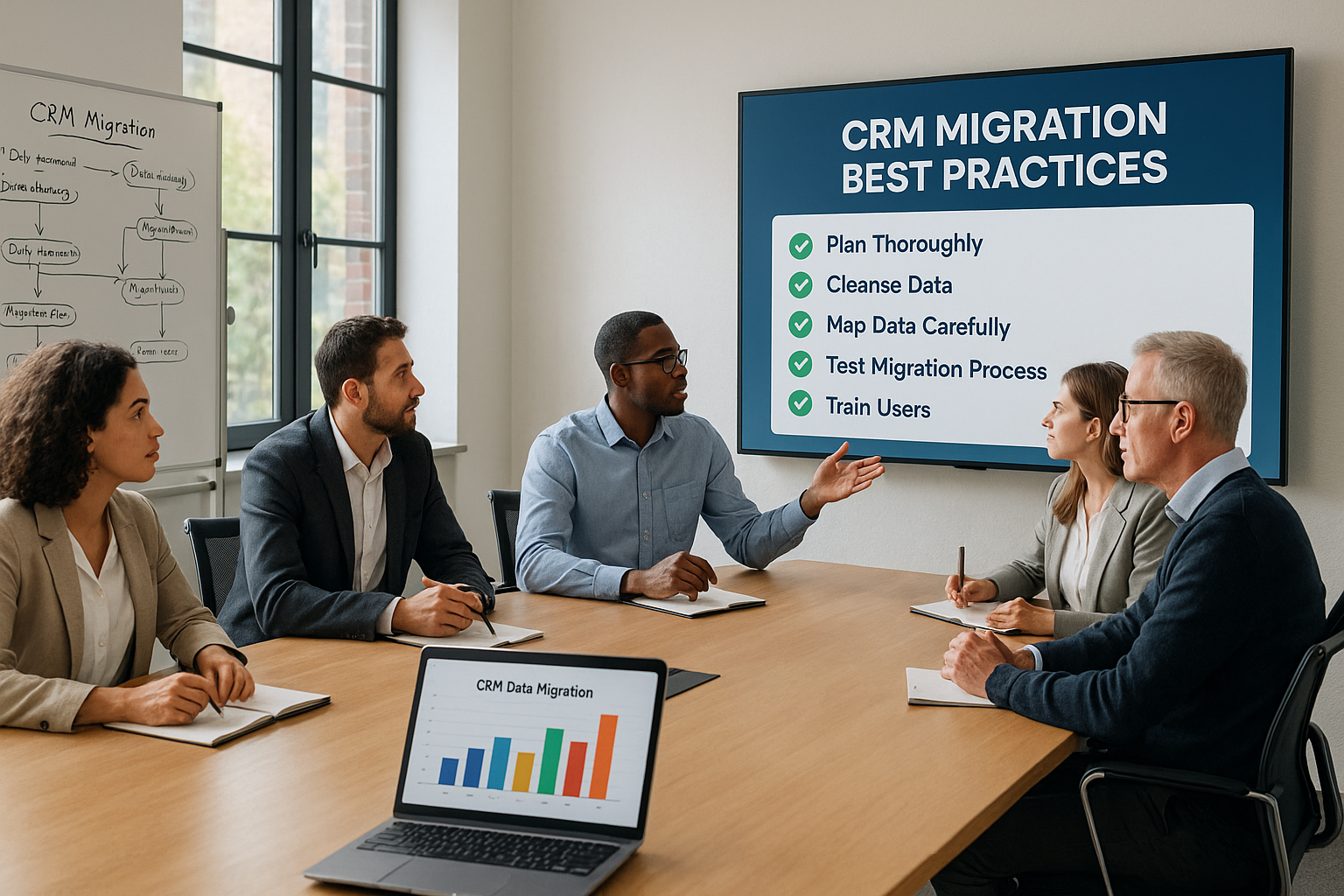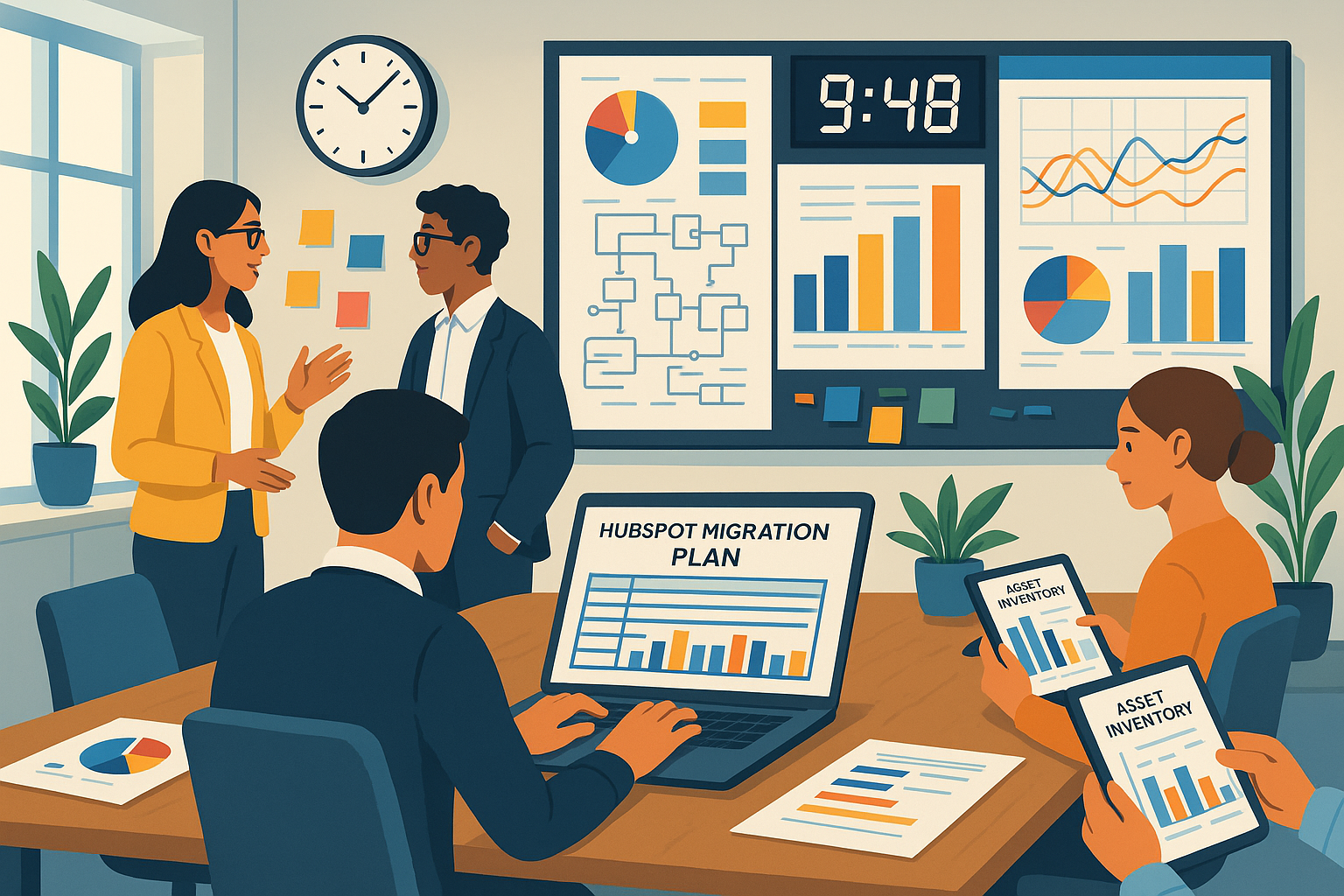What is ERP Integration?
ERP integration definition is a way to link up your ERP system with other software, databases, or external tools, allowing them to collaborate with each other and share data smoothly. This connection keeps everything in sync across your business, ensuring that data flows freely between different systems without any hiccups.
In more down-to-earth terms, ERP integration is like building a bridge between your ERP and other software so they can team up and play nicely together. By doing this, businesses can get more out of their ERP, pulling data from various sources to boost visibility, improve efficiency, and make smarter decisions.
The Importance of ERP Integration
Why is enterprise resource planning integration so crucial? Well, the whole point of an ERP system is to create a single source of truth for your organization—a place where all your data comes together. The perks of this are massive: real-time reporting, boosted productivity, lower operational costs, and sharper business insights. But here’s the catch: your ERP is only as good as the data feeding into it, and that’s where integration comes in!
When you nail ERP integration, you unlock a bunch of game-changing benefits:
New Life to Legacy Systems
Got an old system that still gets the job done? Instead of dumping it for an expensive upgrade, you can integrate it with your ERP, keeping what works while avoiding the headache of new licenses, training, and process changes.
Boost Mobility
A fully integrated ERP lets employees access crucial data on the go, no matter where they are. Without integration, that data might stay stuck in a siloed, outdated system, leaving your team out of the loop when they need it most.
New Integrations
With a smart integration setup, you can connect more than just the usual systems. Do you want to incorporate a particular tool into your CRM? No problem! The best system allows you to mix and match to construct the ideal technology stack for your company.
Eliminate Manual Entry
Manual data entry is a time suck and an error magnet. ERP integration streamlines data flow, saving your team time and preventing errors. Instead of spending hours entering numbers, they may leverage the data to get outcomes.
Simplified Employee Training
With most employees accessing everything through the ERP system, there’s no need for them to learn a bunch of different software. This streamlines training and helps them get up to speed faster.
Without ERP integration, businesses face a tough choice: either let data sit in isolated silos—causing issues like poor visibility, reduced productivity, and lack of a single source of truth—or rely on tedious manual data entry. Manual processes bring errors, hinder collaboration, and prevent access to real-time data.
6 Types of ERP integrations

Exploring ERP integration methods is kind of like discovering different ways to prepare your favorite meal—each one has its own twist and works best in different scenarios. Here are six popular approaches you might want to consider when connecting your ERP system.
1. Point-to-Point Integration (P2P)
This is the most straightforward option, like having a direct line between two friends. Simple enough! But as you add more systems, it can get messy fast, like a tangled web of connections.
2. Enterprise Service Bus (ESB)
Picture the ESB as a busy bus terminal, where all your system messages come in, get organized, and head off to the right destination. It is ideal for complicated situations with several systems, guaranteeing everything works seamlessly and on schedule.
3. Integration Platform as a Service (iPaaS)
iPaaS is like a cloud-based event planner, handling all your integrations with ease. It’s agile, scalable, and ideal for businesses that need flexibility without the hassle of managing heavy IT infrastructure. You can try such a solution like SyncMatters to get all these benefits!
4. Custom Integration Solutions
Sometimes, off-the-shelf just doesn’t cut it. Custom solutions are similar to having a tailor construct a suit that is exactly for you—a perfect fit. Still, they require more time and resources to develop something customized to your specific needs.
5. Middleware Solutions
Middleware works like a translator between systems speaking completely different languages. It steps in to make sure they understand each other, ideal for those situations where your systems just can’t communicate on their own.
6. Native ERP Applications
Trying to force your ERP system to integrate using native tools can feel like trying to make a square peg fit in a round hole. Sure, it sounds good in theory, but it's often more trouble than it’s worth.
Each of these integration methods has its strengths, depending on your business size and needs. Choosing the correct one is like selecting the right instrument for the job—it’s got to fit just right to keep everything running smoothly!
10 Challenges and Solutions for the ERP Integration Process
While ERP integration solves a lot of business headaches, it’s not always a smooth process. There are a few key hurdles to watch out for, and they generally fall into two categories: pre-integration and post-integration challenges. Look at these challenges and solutions to manage them like an expert:
1. Data Issues
Challenges: Data silos—where different departments have their own isolated sets of data—are a nightmare for ERP integration. This makes consolidating everything into your ERP a headache, leading to inconsistent, incomplete, or just plain messy data that can mess with your reporting and efficiency.
Solution: Break down those silos! Use data integration platforms or ERP integration tools to create a unified environment. Establish strong data governance policies for accuracy, consistency, and cleanliness, and encourage cross-team collaboration. Data quality tools can help clean and standardize information before it enters your ERP system.
2. Complex Data Mappings
Challenges: Trying to match data fields between different systems can feel like solving a complex puzzle. It’s often time-consuming and can become a bottleneck in your project.
Solution: Use advanced ETL (Extract, Transform, Load) tools with easy-to-use interfaces to simplify mapping. Bring in data professionals early to develop clear mapping guidelines that will ensure the process runs smoothly and efficiently.
3. Real-Time Data Integration
Challenges: Getting real-time data syncing across systems can be tricky, especially if you’re working with older systems that aren’t built for it.
Solution: Choose integration platforms that support real-time or near-real-time synchronization. Consider using microservices architecture to make data exchanges faster and more flexible, keeping your ERP system up to date.
4. Technical Expertise
Challenges: If your team lacks the technical know-how, integrating ERP systems can be daunting. You need deep knowledge of both the ERP and the systems you’re connecting.
Solution: Invest in training to build your team’s integration skills. Or, bring in external experts or consultants who know the ropes and can guide you through the process smoothly.
5. API Limitations
Challenges: Working with APIs can be challenging—rate limits, missing functionalities, or constantly changing API specs. This can slow down data syncing or require manual workarounds.
Solution: Reduce API call strain by using batch processing and scheduling syncs during off-peak hours. For unsupported features, consider building custom APIs or using middleware. Stay proactive with API monitoring tools and keep your integration code updated to avoid nasty surprises.
6. Middleware Dependencies
Challenges: Middleware can increase complexity and cost, as well as the need for specific expertise to manage it. Relying too much on one vendor can also make you feel stuck.
Solution: Choose middleware that’s well-documented and widely supported. Keep costs in check with scalable solutions and flexible contracts. Look for middleware that supports open standards so you can switch things up if needed and avoid vendor lock-in.
7. Scalability and Performance
Challenges: As your business grows, so does the data load, which can slow down your ERP and frustrate users. Limited resources and system bottlenecks can cause delays.
Solution: Upgrade to scalable infrastructure, like cloud solutions, that can handle larger data volumes. To evenly distribute the workload, use load balancing. Regularly optimize your system to keep everything running smoothly.
9. Organizational Change Management
Challenges: New ERP systems or updates can face pushback from users who are comfortable with the old ways of doing things. This can reduce adoption and effectiveness.
Solution: Tailor training programs for different user groups and use an iterative learning approach to make the transition easier. Get users involved early, and provide ongoing support. Ensure that the integration matches your business objectives to keep everyone motivated.
10. Cost and Resource Constraints
Challenges: ERP integration projects can go over budget thanks to unexpected technical issues, hidden costs, or scope creep. Limited internal resources can add pressure.
Solution: Keep costs under control with detailed planning and strict scope management. Make a separate budget for unexpected expenses. Do a full cost analysis upfront to avoid hidden expenses and outsource strategically to fill in resource gaps.
5 Steps for the Successful ERP Integration Strategy

Let's go over the five major processes in developing an ERP integration strategy:
1. Assessment
First up, it’s time to assess your current setup. This is when you examine your existing software and processes to detect any gaps and determine where things might go wrong.
You need to ask yourself:
- What are our business goals, and who are the key players?
- How does our current ERP support those goals?
- What data is critical, and what other software holds valuable info?
- Are we manually entering data that could be automated?
- What risks might pop up when integrating the ERP with other systems?
Answering these questions paints a clear picture of where you are now and what you'll need to make the integration successful.
2. Planning
After you've analyzed the situation, it's time to create an integration strategy. This step is all about creating a detailed roadmap with timelines, resources, and clear steps. During planning, make sure to:
- Identify the project's size and objectives.
- Determine if you have access to source codes for the software involved.
- Assign roles and responsibilities.
- Identify the tools and technologies needed for the integration.
- Set up milestones and deliverables.
- Plan a data strategy.
- Factor in any risks from the assessment stage and how you’ll tackle them.
A thorough plan is your ticket to a smooth, well-organized integration process.
3. Implementation
The implementation phase is where the real work begins—configuring, programming, and deploying the integration. Throughout this stage, the IT staff should:
- Set up the ERP to synchronize with other software programs.
- Use tools to migrate data from existing systems to the ERP.
- Ensure that data flows correctly and that it’s clean, meaning free of errors.
It is also crucial to maintain track of the progress, documenting any tweaks or issues that pop up along the way.
4. Testing
Testing is essential before launching the new ERP system into production! It allows you to detect bugs before they become full-blown problems. Here’s what you need to focus on:
- Develop a testing plan and write test scripts.
- Make some tests to evaluate the system in different circumstances.
- Log any issues and work with the team to resolve them.
- Before starting, get approval from all parties.
Thorough testing guarantees the integration is ready to go live without surprises.
5. Maintenance
Finally, the work doesn’t stop once everything is up and running. Maintenance is all about keeping your ERP system in tip-top shape. During this phase, IT should:
- Check for any new issues with software.
- Apply updates and patches to keep things secure and running smoothly.
- If the integration demands action from users, train them.
- Provide ongoing support to solve any problems that come up.
Regular maintenance keeps your system running successfully and reliably. Depending on the tools you used for integration, the need for maintenance could be higher or lower. Either way, keeping everything up-to-date is crucial to long-term success.
SyncMatters - The Best Partner for ERP Integration
SyncMatters can be a game-changer for businesses looking to simplify ERP integration and overcome common hurdles. By creating a unified data environment, SyncMatters connects all your business applications, allowing seamless data flow and eliminating those frustrating silos that often slow things down.
Whether you're dealing with older legacy systems or cutting-edge apps, SyncMatters ensures that everything works together smoothly. This leads to faster decision-making, better insights, and more streamlined operations, making SyncMatters the perfect partner for efficient ERP integration.
.png)




